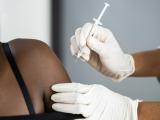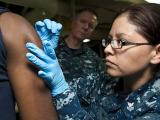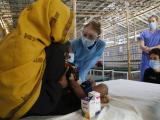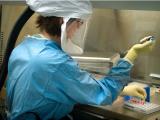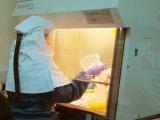Apr 8, 2002 (CIDRAP News) Many emergency response workers feel they don't have adequate safety equipment and training for dealing with situations like the Sep 11 attacks and the subsequent anthrax attacks, according to a new report sponsored by the National Institute for Occupational Safety and Health.
Those emergencies revealed problems with respiratory and eye protection for emergency workers and a lack of training support for facing biological hazards, according to the report. Titled Protecting Emergency RespondersLessons Learned from Terrorist Attacks, the lengthy document was issued by the Science and Technology Policy Institute, a federally sponsored research and development center managed by RAND.
The report is based on a 2-day conference of 150 emergency responders and health officials, held last December in New York City. The attendees included people who responded to the Sep 11 attacks, the bombing of the Oklahoma City federal building in 1995, and the anthrax attacks.
"From the experiences at these attack sites, it is clear that there were significant shortfalls in the way responders were protected," the report summary says. "Many responders suggested that the PPE [personal protective equipment] even impeded their ability to accomplish their missions." PPE used in those situations generally worked well during the initial response, but it was not designed for the sustained use that was required in many cases.
"Conference participants reported that the available garments did not provide sufficient protection against biological and infectious disease hazards, the heat of fires at the sites, and the demanding physical environment of unstable rubble piles," the summary states. "Attendees also indicated that the available eye protection, while protecting well against direct impact injury, provided almost no protection against the persistent dust at the World Trade Center site."
Respiratory protection triggered the most discussion. Participants said self-contained breathing systems were heavy and only worked for 15 to 30 minutes before air bottles had to be changed. Most participants complained that respirators interfered with their vision. In addition, "Filters for air-purifying respirators often did not match available face pieces, and many responders questioned the level of protection they provided, especially during the anthrax responses."
The conference also revealed shortcomings in safety training. For example, emergency medical technicians who treated casualties at the disaster sites should have worn PPE but often didn't, largely because they weren't adequately trained to do so, the report says.
The episodes demonstrated a need for on-site training in PPE use, particularly training for volunteers and constructions workers in the use of respirators. Further, "Health and safety panel members felt that training support during the anthrax attacks was inadequate on all fronts: The response protocols were being developed during the actual responses."
The report includes a number of recommendations, including the following:
- Development of guidelines for the selection and use of appropriate PPE for long-duration disaster response and bioterrorism response
- Research and planning to outfit all responders at sites of large-scale incidents with appropriate PPE and to facilitate standardization and interoperability of PPE among emergency-response agencies
- Development of guidelines and procedures to enforce the use of PPE at disaster sites and to establish effective site management
- Identification of ways to provide useful, timely safety and health and information to responders at disaster sites and to ensure appropriate training on the use of PPE.
See also:
RAND page providing access to the report
http://www.rand.org/publications/CF/CF176/
Centers for Disease Control and Prevention press release about the report
http://www.cdc.gov/media/pressrel/fs020403.htm
